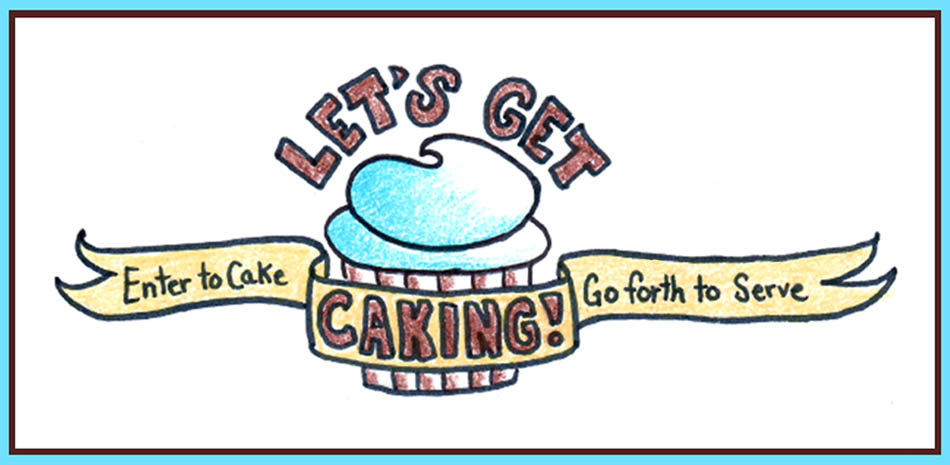
I think the white dots made the diamonds look a lot better. I used a #2 writing tip to pipe the dots in white buttercream. The dots had little peaks on them from lifting the piping tip away and I didn't like how that looked, so I dipped my finger in water and pressed the peaks down to make the dots nice and smooth.

I used the pin prick method and some free-handing to pipe the treble clef onto the top of the cake. There are a couple of different ways you can do the pin prick method.
1. Trace the image you want onto waxed paper, cut it out, then place the waxed paper image onto the cake. Use a sharp pin to prick through the paper into the frosting, so that when you lift it away, you will just need to pipe over the dots left in the icing (sort of like connect the dots).
2. Trace the image onto waxed paper and cut it out. BEFORE placing it on the cake, use a pin to prick through the paper (with a towel or styrofoam behind it). When you lift up the paper, you will see the bumps on the back of the paper left from the pin going through. Place this onto the crusted buttercream icing and gently rub over the image. This will leave the pattern on the frosting and you can pipe the design on top.
I used the first method for this cake. I had some problems with it, mostly because the paper kept pulling back up off the cake every time I lifted the pin. I'll try the second method next time.

I decorated the top and bottom edges with shell borders. The bottom edge just has a reverse shell border. I layered two borders on top of each other for the top edge. I used a regular shell border underneath a reverse shell border. Follow this link for instructions on how to make the reverse shell border: http://www.bakedecoratecelebrate.com/techniques/reverseshell.cfm
Here's the link for instructions on the regular shell border:
http://www.wilton.com/technique/Shell

I used a White Almond Sour Cream (WASC) recipe for the cake and a raspberry filling for the inside. The WASC is delicious and easy. You start out with a regular old cake mix, but add some yummy ingredients like sour cream and almond extract. Here's a link to the WASC cake recipe:
http://cakecentral.com/recipes/7445/the-original-wasc-cake-recipe It calls for a generous dash of salt, but I always leave that out. It tastes fine without it.
The filling is just as good and only has two ingredients: seedless raspberry jelly and raspberry jello.
-10 oz. jar of Polaner seedless raspberry jelly (I just used Polaner because that's the one that was listed on the original recipe, but I'm sure others would work just as well).
-4 oz. box of raspberry jello
Scoop out the entire jar of jelly into a microwave-safe bowl. Heat for 30-60 seconds until it's melted slightly and easy to stir. It should be the consistency of a pie filling and nice and smooth. Add the box of raspberry jello straight into the jelly and stir until the jello powder is dissolved. This is enough filling for an 8" torted cake (filling three layers).
Don't forget to make a frosting dam before you add the filling. The frosting dam is just a ring of thick frosting that you pipe around the edge of a layer before you add the filling. If you don't do this, the filling will leak out the sides of your cake, even after it's frosted. You don't want a bleeding cake!







No comments:
Post a Comment